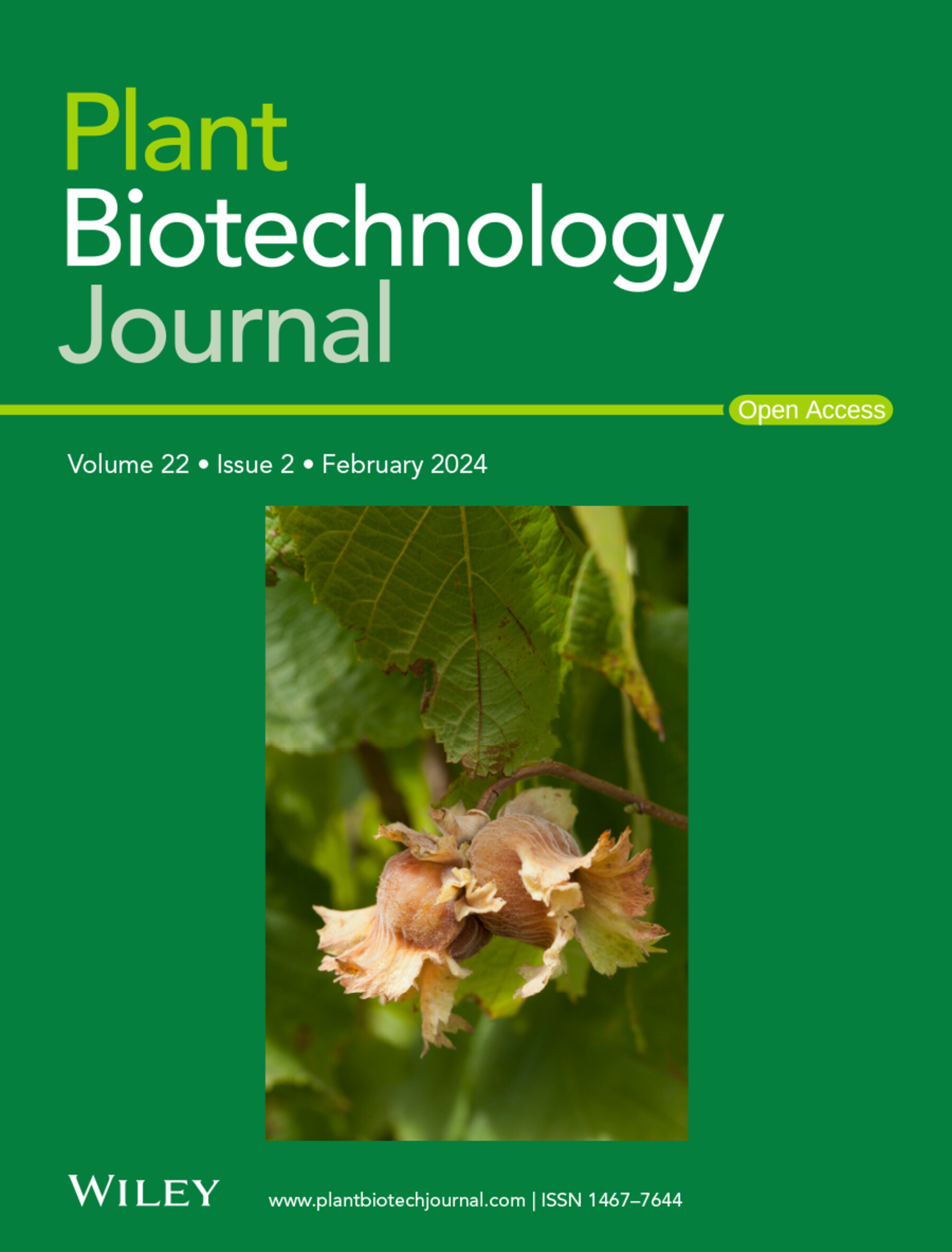柽柳基因组揭示单宁、类黄酮生物合成和腺毛发育
IF 10.5
1区 生物学
Q1 BIOTECHNOLOGY & APPLIED MICROBIOLOGY
引用次数: 0
摘要
“盐树”,Rhus chinensis,具有重要的经济和药用价值,因为它能够生产五倍子(中国胆汁/五倍子),这是一种植物衍生的药材,富含单宁和类黄酮,在传统和现代医学中都有使用。它也因其卓越的抗应力能力而闻名。然而,其单宁和类黄酮生物合成和应激适应的遗传基础仍未得到充分研究。在这里,我们组装了一个大小为357.62 Mb的染色体水平的中华红树基因组。防御相关基因的显著扩增,特别是那些涉及几丁质分解代谢和类黄酮生物合成的基因,解释了该树广泛的环境适应性。我们确定了参与单宁生物合成和水解的关键基因,其中RcTA1在没食子酸积累(可水解单宁的前体)中起核心作用。值得注意的是,RcDIV1通过直接激活RcTA1转录促进单宁水解。此外,我们发现由RcGL2调控的发育良好的多细胞腺毛,以及扩展的转运体(如abcg)和增强的ABA反应,在介导耐盐性中起关键作用。这些因素共同推动了盐类分泌物的产生,包括覆盖在水果表面的酚类和有机酸。本研究对单宁丰富积累、类黄酮生物合成、腺体毛状体发育和逆境恢复的遗传机制提供了深刻的认识,为改善该物种的药用和生态性状提供了宝贵的遗传资源。本文章由计算机程序翻译,如有差异,请以英文原文为准。
The Rhus chinensis Genome Provides Insights Into Tannin, Flavonoid Biosynthesis, and Glandular Trichome Development
The “salt tree”, Rhus chinensis Galla chinensis (Chinese gall/gallnut), a plant‐derived medicinal material used in both traditional Chinese and modern medicine that is rich in tannins and flavonoids. It is also renowned for its remarkable stress tolerance. However, the genetic basis underlying its tannin and flavonoid biosynthesis and stress adaptation remains largely unexplored. Here, we assembled a chromosome‐level genome of R. chinensis RcTA1 playing a central role in gallic acid accumulation, a precursor of hydrolyzable tannins. Notably, RcDIV1 promotes tannin hydrolysis by directly activating RcTA1 transcription. Additionally, we uncovered that well‐developed multicellular glandular trichomes, regulated by RcGL2, along with an expanded array of transporters (e.g., ABCGs) and an enhanced ABA response, play critical roles in mediating salt tolerance. These factors collectively drive the production of salt‐like secretions, including phenolic and organic acids, which coat the fruit surface. Our study provides profound insights into the genetic mechanisms governing abundant tannin accumulation, flavonoid biosynthesis, glandular trichome development, and stress resilience, offering valuable genetic resources for improving the medicinal and ecological traits of this species.
求助全文
通过发布文献求助,成功后即可免费获取论文全文。
去求助
来源期刊

Plant Biotechnology Journal
生物-生物工程与应用微生物
CiteScore
20.50
自引率
2.90%
发文量
201
审稿时长
1 months
期刊介绍:
Plant Biotechnology Journal aspires to publish original research and insightful reviews of high impact, authored by prominent researchers in applied plant science. The journal places a special emphasis on molecular plant sciences and their practical applications through plant biotechnology. Our goal is to establish a platform for showcasing significant advances in the field, encompassing curiosity-driven studies with potential applications, strategic research in plant biotechnology, scientific analysis of crucial issues for the beneficial utilization of plant sciences, and assessments of the performance of plant biotechnology products in practical applications.
 求助内容:
求助内容: 应助结果提醒方式:
应助结果提醒方式:


